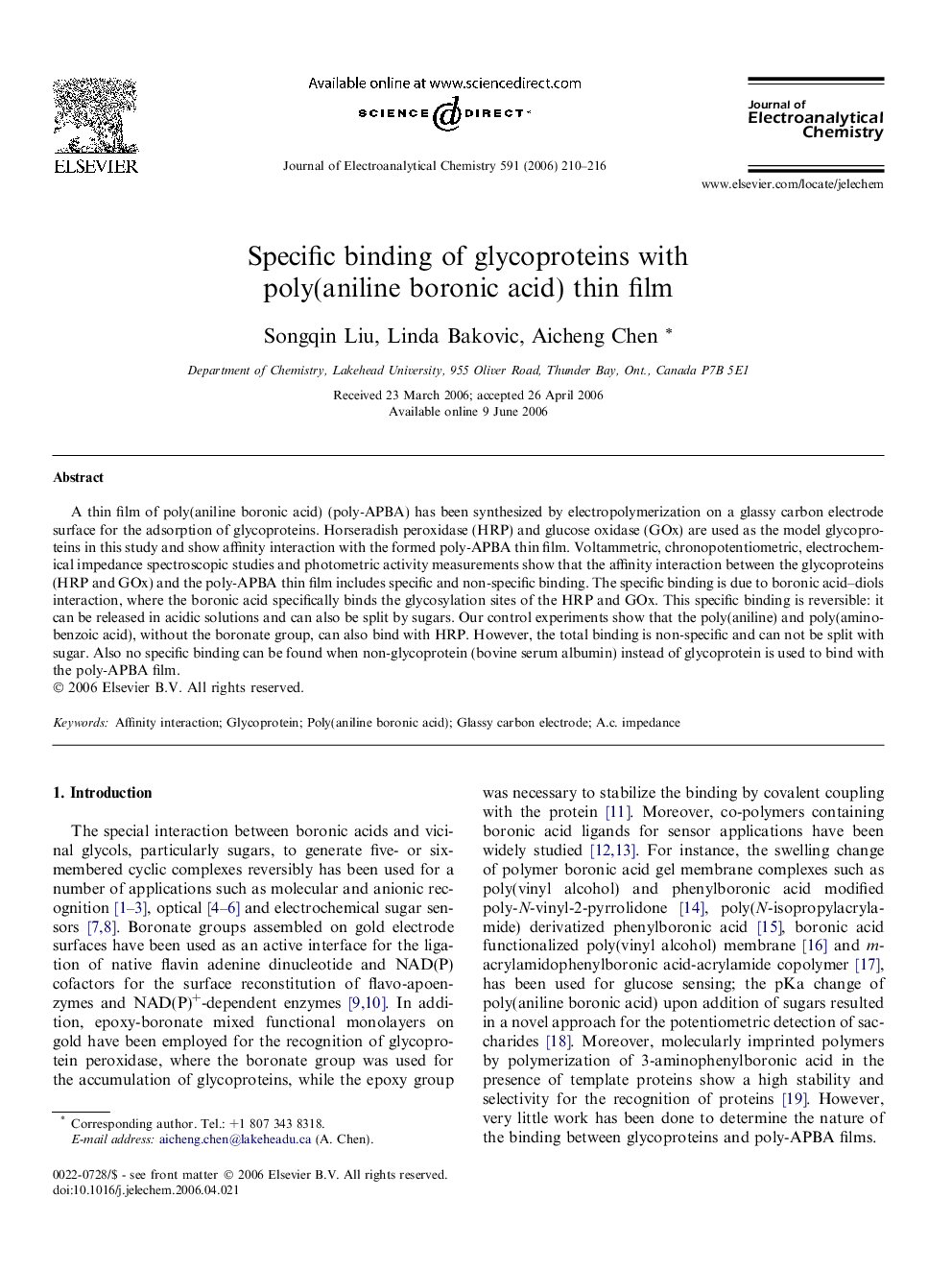| Article ID | Journal | Published Year | Pages | File Type |
|---|---|---|---|---|
| 221270 | Journal of Electroanalytical Chemistry | 2006 | 7 Pages |
A thin film of poly(aniline boronic acid) (poly-APBA) has been synthesized by electropolymerization on a glassy carbon electrode surface for the adsorption of glycoproteins. Horseradish peroxidase (HRP) and glucose oxidase (GOx) are used as the model glycoproteins in this study and show affinity interaction with the formed poly-APBA thin film. Voltammetric, chronopotentiometric, electrochemical impedance spectroscopic studies and photometric activity measurements show that the affinity interaction between the glycoproteins (HRP and GOx) and the poly-APBA thin film includes specific and non-specific binding. The specific binding is due to boronic acid–diols interaction, where the boronic acid specifically binds the glycosylation sites of the HRP and GOx. This specific binding is reversible: it can be released in acidic solutions and can also be split by sugars. Our control experiments show that the poly(aniline) and poly(aminobenzoic acid), without the boronate group, can also bind with HRP. However, the total binding is non-specific and can not be split with sugar. Also no specific binding can be found when non-glycoprotein (bovine serum albumin) instead of glycoprotein is used to bind with the poly-APBA film.
